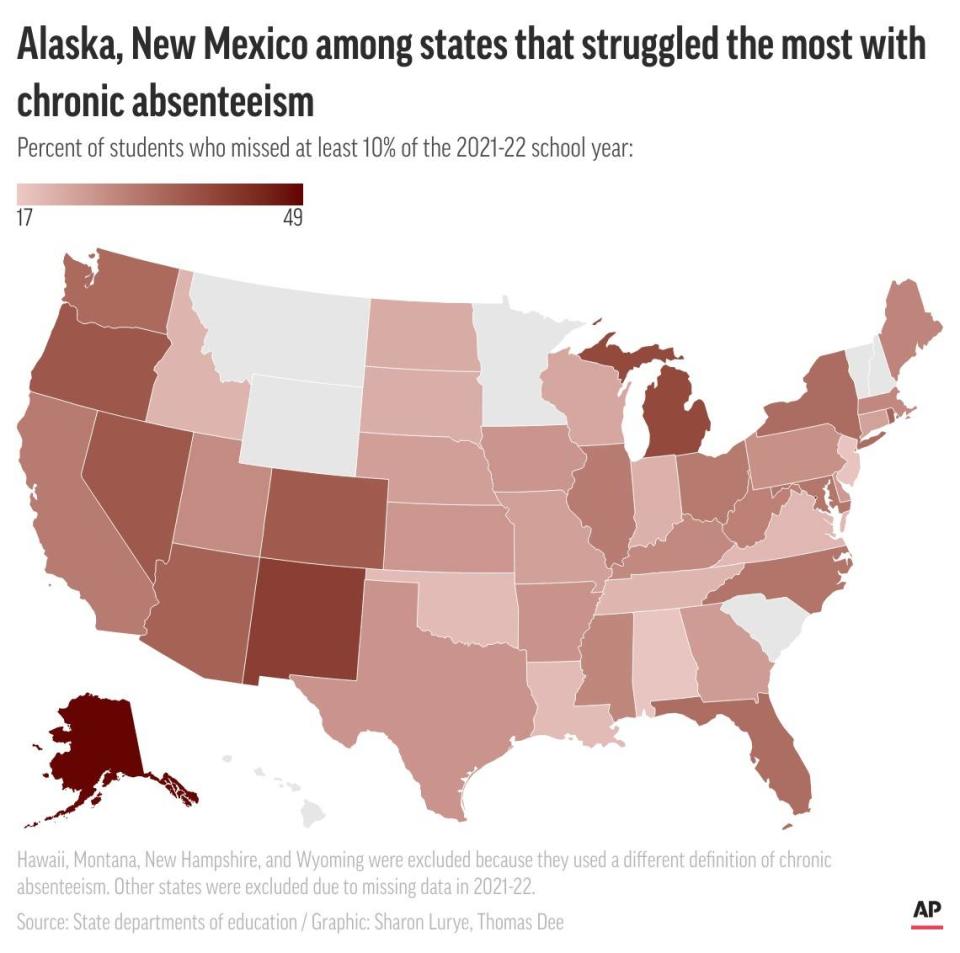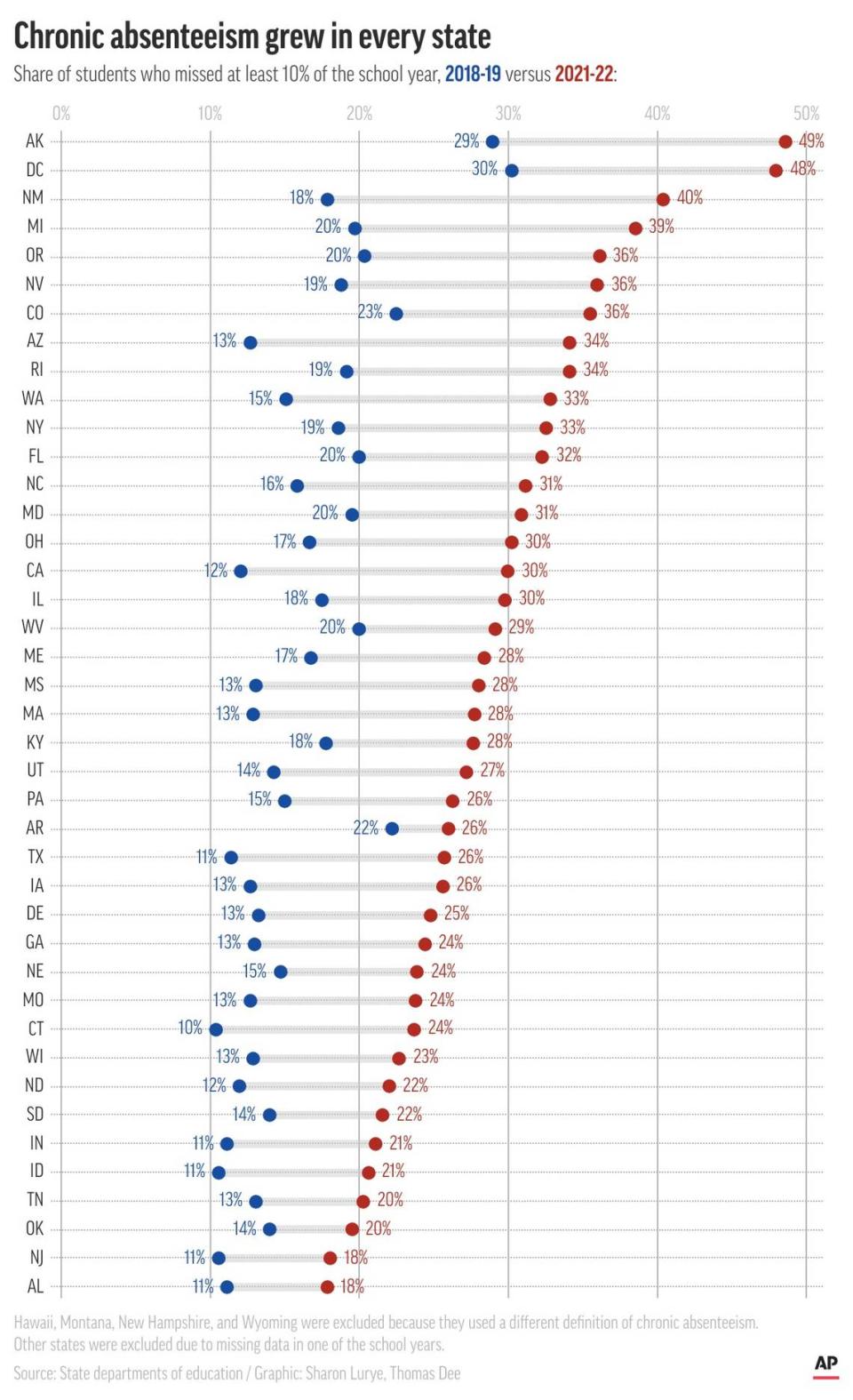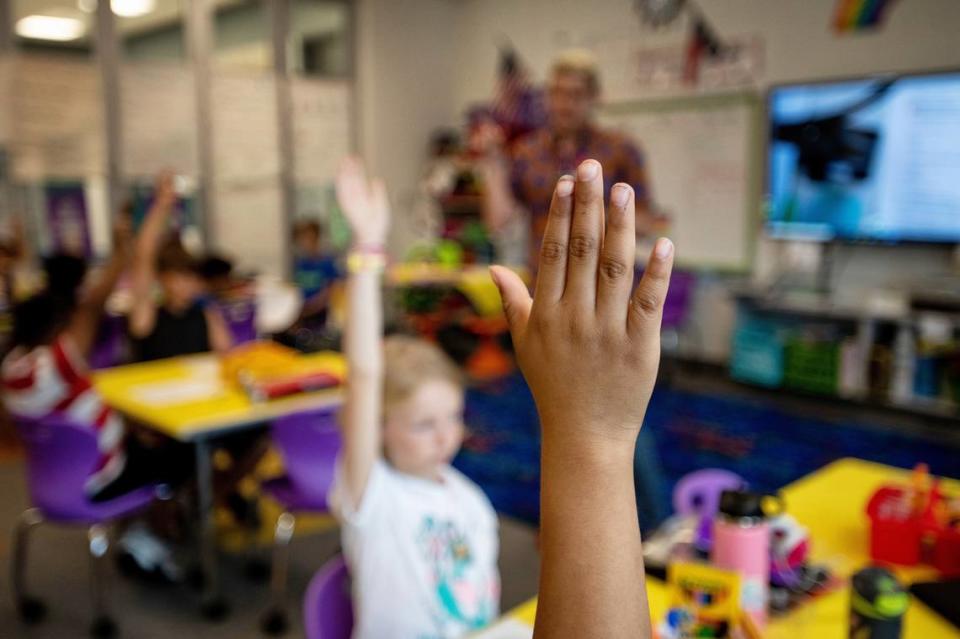Hundreds of thousands of NC students are chronically absent. Why aren’t they in school?
More than 30% of North Carolina students are chronically absent from school — nearly double the rate that existed before the pandemic.
North Carolina’s spike in chronic absenteeism, meaning students missed at least 10% of the school year, is part of a troubling national trend. More than a quarter of students nationally were chronically absent in the 2021-22 school year — a 91% increase from before the pandemic in the 2018-19 school year.
All told, an estimated 6.5 million additional students nationally became chronically absent, according to the data, which was compiled by Stanford University education professor Thomas Dee in partnership with The Associated Press. Taken together, the data from 40 states and the District of Columbia, provides the most comprehensive accounting of absenteeism nationwide.
The absences come on top of time students missed during school closures and pandemic disruptions. They cost crucial classroom time as schools work to recover from massive learning setbacks.
Absent students miss out not only on instruction but all the other things schools provide — meals, counseling, socialization. In the end, students who are chronically absent — missing 18 or more days a year, in most places — are at higher risk of not learning to read and eventually dropping out.
“The long-term consequences of disengaging from school are devastating. And the pandemic has absolutely made things worse and for more students,” said Hedy Chang, executive director of Attendance Works, a nonprofit addressing chronic absenteeism.

470,000 NC students chronically absent
In seven states, the rate of chronically absent kids doubled for the 2021-22 school year, from 2018-19. Absences worsened in every state with available data. Notably, the analysis found growth in chronic absenteeism did not correlate strongly with state COVID rates.
In North Carolina, the percentage of chronically absent students rose from 15.88% in the 2018-19 school year to 31.18% in the 2021-22 school year. That’s a 96% percentage point increase.
North Carolina had the 13th highest rate of chronic absenteeism in the 2021-22 school year, according to the data from the available states and the District of Columbia.. North Carolina also had the 10th-highest percentage point increase.

Absences nationally were more prevalent among Latino, Black and low-income students, according to Dee’s analysis. That’s reflected as well in North Carolina’s data, with the chronic absenteeism rate being 38% for Black students and 35% for Hispanic students. It was 26% for white students and 14% for Asian students.
Nearly 470,000 North Carolina K-12 students were chronically absent in the 2021-22 school year. That’s an additional 225,000 students since the pandemic.
Why are kids staying home?
Figures for North Carolina and most states aren’t available yet for the 2022-23 school year. But Dee said the data from the few states that have released 2022-23 figures indicate that chronic absenteeism remains double pre-pandemic levels.
Kids are staying home for myriad reasons — finances, housing instability, illness, transportation issues, school staffing shortages, anxiety, depression, bullying and generally feeling unwelcome at school.
And the effects of online learning linger: School relationships have frayed, and after months at home, many parents and students don’t see the point of regular attendance.
“For almost two years, we told families that school can look different and that schoolwork could be accomplished in times outside of the traditional 8-to-3 day. Families got used to that,” said Elmer Roldan, of Communities in Schools of Los Angeles, which helps schools follow up with absent students.

Dee said schools can help by reaching out to parents about absences in a non-judgmental way. He said schools shouldn’t excoriate families about missing school but talk about the value of learning.
“When you provide text messaging or informative postcards to families about what’s going on with their student attendance, that can have quite good impact,” Dee said in a briefing with reporters. “Again, in a low-cost way that’s relatively easy to upscale with fidelity.”
North Carolina’s attendance goal
The high chronic absenteeism rate is a call to action in North Carolina.
myFutureNC has set a goal to lower the chronic absenteeism rate to 11% by 2030. The statewide non-profit group says more students need to be in school regularly to meet the goal of having two million North Carolinians have a postsecondary degree or job credential by 2030.
“Chronic absenteeism needs to be taken seriously if we want to meet our educational attainment goals,” said Emma Marshall, a research analyst at the Carolina Demography Center, part of the Carolina Population Center at UNC-Chapel Hill.
Marshall authored a blog post on North Carolina’s rising chronic absenteeism rate.
The state Department of Public Instruction is taking the issue of chronic absenteeism seriously, according to Blair Rhoades, a DPI spokesperson. She pointed to how DPI and State Superintendent Catherine Truitt may recommend including chronic absenteeism as one of the ways to measure schools in a revised school performance grading system.
Rhoades said including chronic absenteeism as a measure of school performance will provide additional visibility around the issue.
Dee said educators need to be preemptive heading into the new school year in addressing the attendance issue.
“This rise in chronic absenteeism is seriously relevant to our recovery challenges because our most prominent efforts at academic recovery from the pandemic involve in-school activities such as tutoring and extended learning time and supports that involve you being in the building,” Dee said. “If students aren’t there, that’s really going to vex what schools are trying to do.”
The Associated Press contributed to this report.

